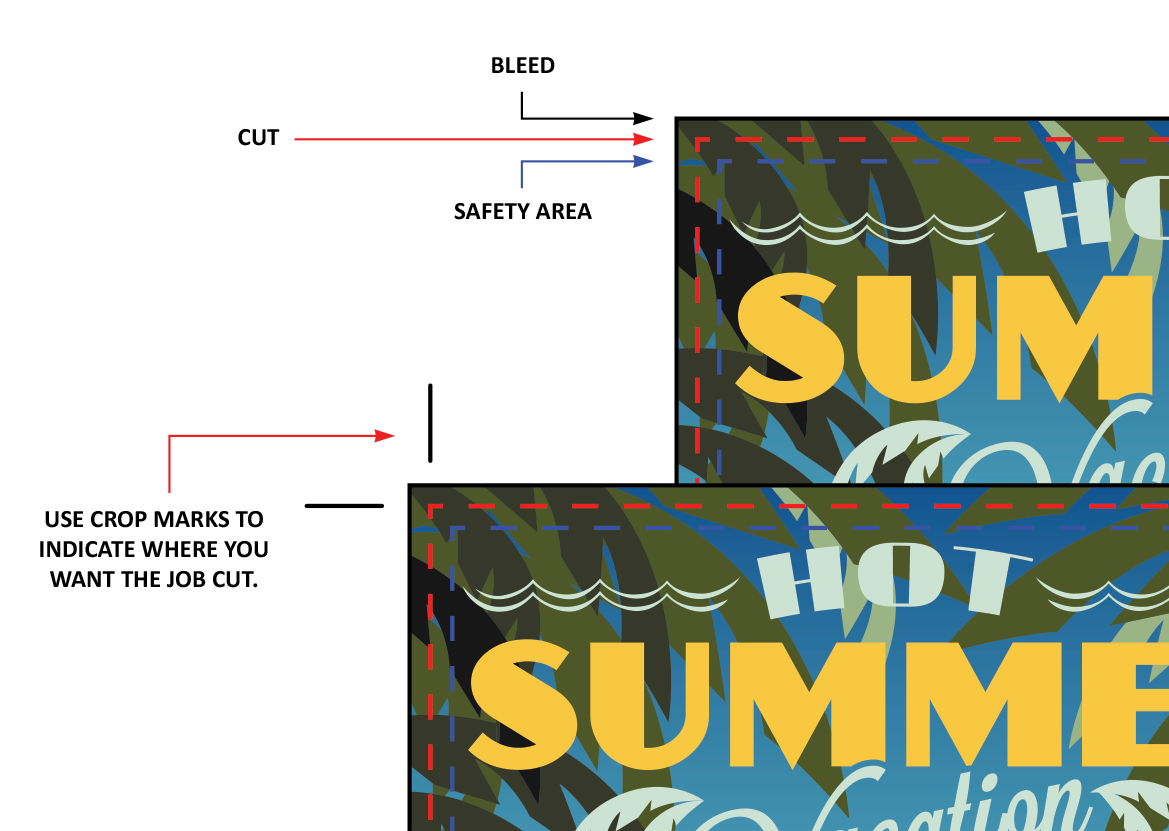Printing Services Questions:
Answer:
When you’re ready to send us your files for printing, we recommend saving them and sending them as .PDF files. However, if you feel like sending them in other file formats such as jpg, jpeg, eps, tiff, tif and png you can. If you decide to send .PDF, then remember to include embedded or outlined fonts. As opposed to sending a CMYK file (Cyan, Magenta, Yellow, Key), an RGB file (red, green, blue) could produce a color shift. In order to avoid this circumstance, we recommend that you use CMYK color mode for your printing designs.
If you’re not sure what bleed marks and crop marks are, they are terms that exist in the world of printing that are important when you’re setting up and arranging your files for print. The area of paper that’s going to be trimmed off once the print job is finished is referred to as the bleed. In order to properly and accurately trim the paper, crop marks are used to specify the spots where the trimming will take place on the paper.

Identifying the bleed marks and crop marks are important tasks when you’re sending over files for printing because they notify the printer about the boundaries on the paper and what needs to be trimmed. Both the bleed marks and crop marks serve an important purpose because they are printing elements that ensure that your job will be printed properly. Bleed needs to be stretched past the cut-line so that it gives the final product a finished look. Also, crop needs to be included (if you send an .eps or .pdf) so that we know exactly what needs to be done to the printing job.
